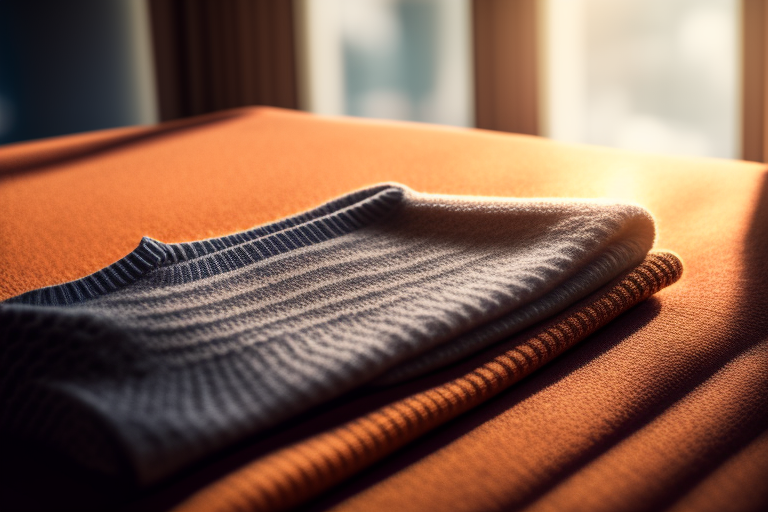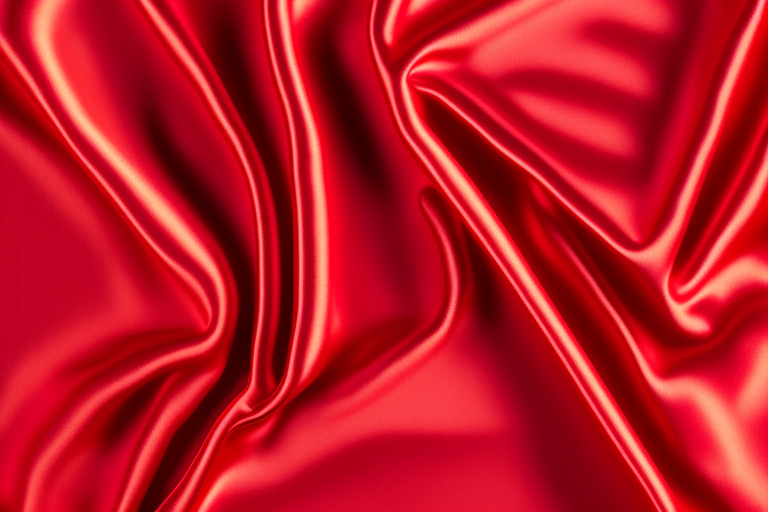Luxurious fabrics exude elegance, quality and indulgence. From silky smooth satins to plush cashmere knits, these textiles impart a sense of luxury to any garment or home decor item. But what exactly makes a fabric luxurious? In this beginner’s guide, we’ll explore the origins, characteristics and uses of the world’s finest and most coveted fabrics.
What Qualifies as a Luxurious Fabric?
Fabrics considered to be luxurious often have the following qualities:
- Made from rare, expensive natural fibers like silk, cashmere, linen, vicuña wool
- Labor intensive production process
- Intricate designs like damask or jacquard
- Smooth, soft textures
- Rich, vivid colors
- Sheen or luster on the surface
- Associated with royalty, aristocracy or high society
While luxury is subjective, most would agree that fabrics like silk, cashmere, velvet and satin epitomize opulence and indulgence. Natural fibers prevail when it comes to luxury fabrics, although innovative synthetics and blends also impart lavish qualities.
A Brief History of Luxury Fabrics
The origins of many luxury fabrics are ancient, threaded throughout the history of empires and trade routes.
Silk production began in Neolithic China dating back to 4000 BC. The secret of silk making eventually reached the West via the famous Silk Road trading network.
Cashmere shawls woven from the super-soft undercoat of Himalayan goats were popularized in Europe in the 17th and 18th centuries.
Velvet originated in the Middle East, gaining popularity among European nobility during the Renaissance before falling out of favor after the French Revolution.
Rare, delicate luxury fabrics were popular among ancient Greek and Roman aristocrats. Fabrics like wool, linen, cotton and leather were primarily accessible to the elite ruling classes.
Today, improved manufacturing techniques have increased availability of luxe fabrics. However, the labor intensive process for fabrics like silk and cashmere still commands lofty prices.

Characteristics of Luxurious Fabrics
Texture
Luxury fabrics feel sensuous and indulgent against the skin. Smooth, fluid textures and plush, cozy knits prevail.
- Softness – Silky smooth or feather light to the touch
- Smoothness – Satin and finely woven fabrics have an ultra-smooth surface
- Thickness – From diaphanous silks to thick woven tapestries
- Weight – Light as air chiffons to substantial brocades
- Drape – Fabrics that gracefully flow over the body
Appearance
Luxury fabrics make a visual impact with eye-catching sheen, vibrant colors and ornate designs.
- Sheen – Silks and satins have a luminous sheen, while velvets are matte
- Luster – Fibers like silk and cashmere impart natural luster
- Color – Deep, jewel-toned hues and rich neutrals
- Patterns – Intricate jacquards, brocades, damasks and tapestries
- Design – Decorative embellishments, embroidery and needlework
Comfort
Luxury fabrics feel soothing and comfortable against bare skin. Many are lightweight and breathable.
- Breathability – Lightweight weaves promote airflow and ventilation
- Insulation – Cashmere and wool provide warmth without weight
- Moisture-wicking – Silk and linen fabrics absorb moisture
- Hypoallergenic – Alpaca, cashmere and silk are gentle on sensitive skin
- Durability – Ability to maintain integrity over time with proper care
Types of Luxurious Fabrics
Natural Fabrics
Silk – The epitome of luxury, silk is smooth, cool, and sensuous. Used for gowns, blouses, linens.
Cashmere – Extremely soft and lightweight. Made into sweaters, scarves and accessories.
Velvet – Soft and plush with a signature depth and sheen. Used for evening wear.
Fur – Wild fur like mink and sable provides warmth and luxury. Alternatives like faux fur are also glamorous.
Wool – Luxurious wool comes from merino sheep and soft lambswool. Tailored into suits and coats.
Synthetic Fabrics
Satin – Smooth and shiny with a luxurious drape. Used for formal gowns and bedding.
Chiffon – Delicate, lightweight sheer fabric with a soft drape. Makes diaphanous dresses.
Lace – Intricate embroidered designs create a delicate web. Used for overlays and accents.
Leather – Buttery soft leather becomes jackets, handbags and furniture.
Suede – Napped leather with a brushed finish. Tailored into jackets and accessories.
Uses of Luxurious Fabrics
Luxury fabrics visually enhance any garment, furnishing or object.
Clothing
- Evening & formal wear – Silk, satin and velvet for gowns and tuxedos
- Bridal wear – Silk dresses and lace overlays
- Casual wear – Cashmere sweaters, leather jackets
- Accessories – Silk scarves, leather bags, cashmere shawls
Home Décor
- Upholstery – Velvet or leather sofas and headboards
- Bedding – High thread count silk, satin, and linen sheets
- Curtains – Light chiffon or richly colored brocade drapes
- Rugs – Plush wool pile rugs or hand-knotted silks
- Table linens – Fine cotton damask and embroidered lace tablecloths
Fabric Care & Maintenance
To maintain their integrity and extend longevity, luxury fabrics require special care and handling.
Cleaning
- Dry cleaning – Recommended for silks, wool, and delicates
- Hand washing – Gently clean with mild soap in cool water
- Machine washing – Use a mesh bag on delicate cycle with cold water
- Spot cleaning – Immediately treat stains on silks and velvets
- Steam or press – Avoid wrinkles by steaming or ironing delicate fabrics
Storage
- Fold – Carefully store cashmere sweaters folded in a drawer
- Hang – Hang silk dresses to prevent stretching out of shape
- Vacuum seal – Use storage bags to prevent moth damage for woolens
- Temperature control – Store leather and fur at cool consistent temperatures
- Sunlight – Avoid direct sunlight which can fade dyes and damage fibers

Sustainability Considerations
Creating luxury fabrics has environmental and ethical impacts including:
- Intensive water consumption to grow fibers like cotton
- Pesticides used to cultivate fibers like wool and silk
- Hazardous dyeing chemicals polluting waterways
- High energy use in fabric production
- Concerns over animal welfare for leather, fur, angora
- Unsafe labor conditions in factories
- Lack of transparency in complex global supply chains
However, innovative luxury brands are pioneering solutions:
- Using Oeko-Tex certified dyes and ethical treatment of animals
- Eco-friendly processing standards for water, energy and chemicals
- Fair wages and safe conditions for workers
- Recycled and biodegradable fabrics
- Full supply chain mapping and audits
Luxury Fabric Essentials
Here are 5 of the top luxurious fabrics to look for along with example price points.
| Fabric | Description | Price Range |
|---|---|---|
| Silk Charmeuse | Smooth, fluid silk with luminous sheen | $80 – $300 per yard |
| Cashmere Sweater | Soft, lightweight cashmere knit | $200 – $2000 |
| Velvet Blazer | Plush cotton-silk velvet with distinctive pile | $200 – $2000 |
| Merino Wool Suit | Superfine 16.5-18.5 micron merino wool | $500 – $5000 |
| Lambskin Leather Jacket | Buttery soft and supple lambskin | $700 – $3000 |
The Allure of Luxury Fabrics
Luxurious fabrics have captivated us through the ages as symbols of beauty, quality and status. While fashions and tastes have evolved, the sensuous allure of silks, cashmeres and velvets endures. As fabrics become more ethical and eco-friendly, luxury can also mean conscientiousness and care for people and the planet. Whether gently draped on the body or sumptuously showcased in the home, luxury fabrics continue to represent the pinnacle of textile craftsmanship and the good life.
Learn More:
- Fine Fabric Guide by The Tailory New York
- Textile Conservation at The Met Museum
- Fabric of Society Blog
- Sustainable Luxury Fabric Innovations by Eluxe Magazine
Frequently Asked Questions
What is the softest and most luxurious fabric?
Many consider cashmere and silk to be the softest and most luxurious fabrics. Cashmere is prized for its featherweight softness. Silk has a smooth, fluid feel and luminous sheen. Other indulgently soft fabrics include merino wool, alpaca, angora, and vicuña wool.
What is the most expensive and luxurious fabric?
Vicuna wool is one of the rarest and most expensive fabrics in the world. Vicuña are camelids related to the alpaca that live high in the Andes mountains. Their ultra-fine wool can cost up to $3000 per yard. Other pricey luxury fabrics include silk, cashmere, and high quality leather.
How can you tell high quality luxury fabrics?
Hallmarks of luxury fabrics are their buttery softness, beautiful drape, rich colors, and ornate patterns like damask and jacquard. Natural fibers like silk, cashmere and merino wool impart luster. Smooth finely woven fabrics have an indulgent feel. Details like intricate beading and embroidery elevate luxury fabrics.
What are the best textiles for luxurious clothing?
Luxurious clothing is fabricated from silks, fine wools, cashmere, lace, leather and suede. Silk is ideal for flowing evening gowns. Tailored wool and cashmere suits impart sophistication. Leather and suede make lavish outerwear. Delicate metallic lace and sheer chiffon overlays add glamour.
How do you care for delicate luxury fabrics?
Read fabric care labels and follow special washing, drying and ironing instructions. Dry clean silks, woolens and delicates. Hand wash gently in cool water or use the delicate cycle. Air dry and press carefully with an iron on low heat. Store properly folded or hung to prevent stretching. Keep leather and fur cool and avoid direct sunlight.








